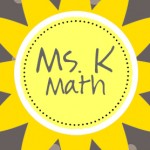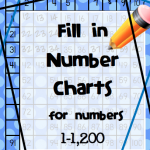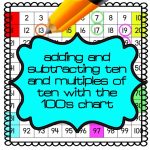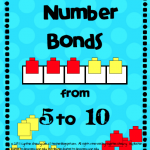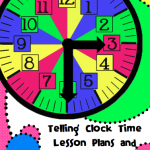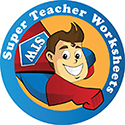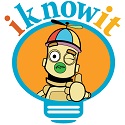What Do You Do in Your Math Intervention Group?
So, I have a math intervention group. I have done intervention lots of ways…and the thing is, there are always core things that kids struggle with. Those things without a double are always addition, subtraction, and multiplication facts. Next, they struggle with the standard regrouping algorithm. And, why do they struggle? BECAUSE, of course, no one sits with them at home to help them learn these things if the concepts don’t sink in during school time.
Enter me. I have been working with some students the past few weeks on subtraction regrouping…with success! Here is what I have done, and what I have discovered. First of all, several of the intervention students were able to regroup UNTIL they had to regroup across zeros. They weren’t sure what to do when they had to borrow two places over. How did I figure this out you ask? Well, with my group of four students, I gave them a worksheet. (gasp! a worksheet??!!) Yes, I gave them a worksheet and had them work a few and checked to see which ones they were getting correct and which ones they were missing. I would have them work one problem and hand me the sheet to check. This way they were getting immediate feedback. During this time, I realized that they weren’t getting the answers right unless they borrowed across zeros or had to borrow two places over. I used and am so thankful for Super Teacher Worksheets subtraction worksheet generator! This conveniently allowed me to print a new worksheet (complete with answer key) when I felt they needed practice.
Now when I realized they needed help with regrouping across zeros, I realized there was a regrouping misunderstanding. So, I used the Singapore math number discs method to show them what was happening when they were regrouping. After showing them and having them do one with me, the next day they performed a lot better on their subtraction regrouping problems. I have a SMART board lesson and worksheets if you would like some for students to practice with. The grid is already made for the students…these however do not have seven digits like the worksheet above.
A few other things I did to help the students think about the regrouping process were.
- Say this little rhyme…”More on the floor, go next door, and get 10 more”. This way they would always know they were bringing ten over…not 9, not 8.
- Sometimes when students want to skip over a place value column, I would describe it as driving in traffic. Your car doesn’t just fly over the other column, it has to change lanes one at a time…it can’t be a helicopter.
- Another idea I mention is place value columns in relation to the drawers in a cash register. If you cash in your $100 bill for others, you trade it in for 10 $10, then you trade in the $10 for 10 $1 bills.
Try these things and soon you will be on your way to having expert subtraction regroupers!
No Regrouping Needed!
Why does this alternative to regrouping work? I have noticed an image similar to this on Pinterest/Facebook.
The comments go something like:
- Wow!
- Cool, I’ve never seen this before!
- How does this work?!
- Why does this work?!
I thought I would take a moment to explain why this works. A simple piece of ribbon gives us a chance to explore this concept. Above I used smaller numbers to demonstrate. 100-88=12, but subtracting one from the minuend and subtrahend gives us the same answer. 99-87=12 also. When moving the ribbon down the number line we can see how the distance on the number line stays the same because we took the same amount from both the numbers. Hence, the ribbon remains the same size because the distance doesn’t change.
The distance = the difference. As long as the distance is constant between the numbers this will work.
Now, you tell me, will this work if, instead of subtracting one, I subtract five from the minuend and subtrahend?
This Helped a SPED Kid Learn Subtraction Regrouping!
I posted earlier about a strategy that helped a struggling SPED student add with regrouping. Now, I am sharing the strategy I taught this same child to learn subtraction with and without regrouping.

Thank you to Lovin Lit and Educasong for the clip art!
Above there are two examples. One of the examples is with regrouping and the last one is without regrouping. This strategy will work both ways. I admit I have been using the rhyme that a couple of teachers have gotten from Pinterest…”More on top, no need to stop. More on the floor, go next door, and get ten more.” I have kids recite this first. The rhyme works very well so I use it. Anyhow, I have the kids always circle the number on the bottom in subtraction. The circle represents their head. Then they make dots to count up until they get to the top number. The dots are like their fingers. To get the difference they count how many dots they drew. Simple, easy, and if kids can make the jump to use their fingers, they can go ahead and don’t have to draw dots. I did this because I found some students don’t know how to effectively use their fingers to count up yet.
You may also like Addition Intervention Strategies:

3 Ways to Check a Subtraction Problem
Here are 3 ways we are teaching the kids to check their subtraction problems. First, they start out checking it with estimation to see if their answer is reasonable. Next, they can check their regrouping if it is a regrouping problem by adding their regrouping numbers back together to make sure it equals up to the minuend (the top number in a subtraction problem). Finally they can check their accuracy by using the inverse operation of addition and subtraction. They can add the difference to the subtrahend (the number on the bottom of the problem). I remember this because of a sub-marine is on the bottom like a subtrahend. Sub means under. See the ways kids can check this below. Hmmmm…could be a great anchor chart!! 🙂
Are You Teaching Branching? Make Sure You Do This First…
Several years ago I worked at a charter school the first year it opened. The school implemented Singapore math, so that was my first year to test the waters of Singapore math. Our trainer instructed the 3rd grade teachers to go ahead and teach branching even though it was a skill the students should have learned in second grade. To teach children the procedure of branching, it took about four weeks total, and then not all of the students perfected the ‘procedure’ of addition and subtraction branching. The students had more success learning addition than subtraction branching. With the mandates of testing, we weren’t able to solely use Singapore math, but I had to supplement with other materials. Then as you are all familiar with, testing approached and likewise the pressure along with it. Then we didn’t have ‘time’ to teach number sense SO deeply since other skills are tested. Unsurprisingly, the teaching of Singapore Math somewhat fell apart midyear. Please don’t take this wrong I LOVE Singapore math because it works, but the conditions of testing hindered us from teaching it wholly.
Fast forward to four years later. After teaching small groups today, I have reflected on the year that I taught branching and its effectiveness. Yesterday I pulled small groups of average math students to teach them regrouping for the second day in a row, I had them build double digit numbers with base ten blocks blocks. I repeated this process today with the same group of students. After that I started notating their thinking with branching representation on a small white board. Students intently watched and helped me notate the thinking they had done with the blocks in (abstract) numbers . They began to understand grouping with tens and how to decompose numbers to build more tens or hundreds. Then I told them that they couldn’t use paper or blocks, but could only look at the addends I was about to write on the board. I asked them to whisper the answer in my ear so that others could still think. I was amazed! Half of them could answer the question correctly doing mental math. The other half were only 1 away from the correct answer. I was so proud.
I shared the above to really say the kids taught me something in just two days because of their adept ability to add mentally. Teaching branching worked so much better four years later–all I had to do was provide an experience with branching directly after building with base ten blocks. Why didn’t I start out with the concrete blocks first before I threw abstract numbers at them…duh me! Branching made so much more sense to them after building a concrete foundation. Reflection is priceless!
Are Your Students Struggling with Learning Subtraction Regrouping?
Two years ago I was introduced to math number discs and began using them in my classroom. I have come to rely on teaching regrouping using the math number discs after modeling regrouping with base ten blocks on a mat. These number discs (which are really expensive to purchase) are marked with 1’s, 10’s, and 100’s. An inexpensive alternative to using the ready made number discs is buying colored bingo chips and writing numbers on these yourself. Every place value position is a different color. The ones are white, the tens are red, the hundreds are orange, and the thousands are yellow. Students group the discs to represent a number on their place value mats and then take away the needed discs. Moving the discs around on the mat themselves does not seem to help students make the connection as much as having them draw and mark out the discs as they subtract. When they notice there are no more discs to mark out in the tens place for example, students realize they have to borrow from the hundreds place, mark out a hundred disc, and draw ten tens discs. If you scaffold this understanding to the actual borrowing and show students that when you borrow from the hundreds place to bring over ten tens, students have a light bulb moment and see the connection to all the marking out and rewriting of numbers that occurs in the abstract algorithm we call subtraction with regrouping.
Also, I am including a link below to my July 14th post in which I am showcasing a Smart Board lesson and practice pages that I created using interactive number discs.
How Can You Be Successful When Teaching Subtraction with Regrouping?
I just read a fabulous article from the periodical Teaching Children Mathematics (March 2011 issue) about the effectiveness of teaching subtraction with regrouping. A group of students was given a pretest beforehand and scored about 16% proficient at subtraction with regrouping from the instruction they had received the year before. The teacher showed students examples of the error patterns they were making. Next, to teach students about the errors they were making, the teacher gave students magnifying glasses and investigator hats so that they could become investigators to find a particular error pattern. Students relished the idea of finding the mistakes. As a result, the post test revealed a dramatic–more than 60% increase in proficiency of subtraction with regrouping. This article is not available for free online, however you can purchase it at http://www.nctm.org/eresources/toc.asp?journal_id=4&Issue_id=973 or your library may have a copy.
